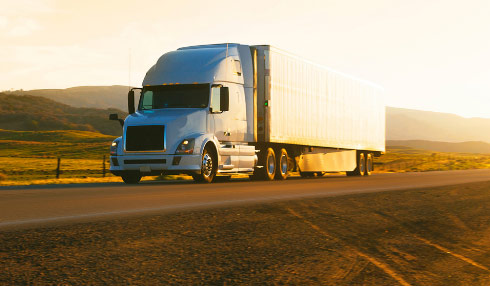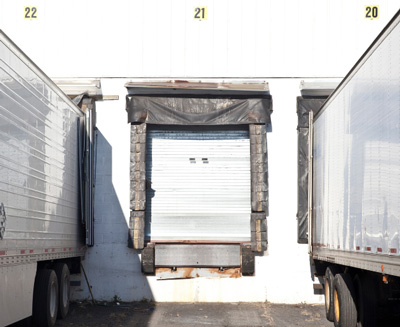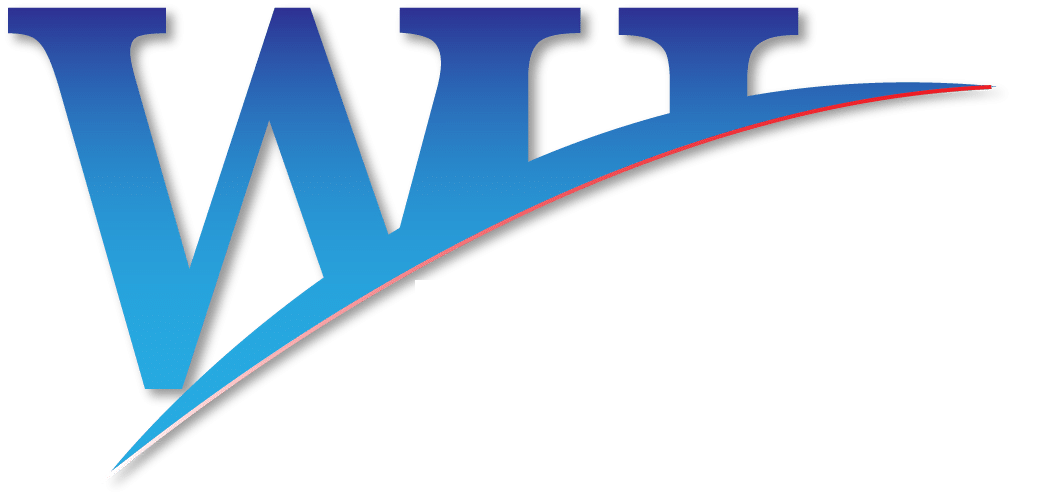Shipping Freight in a 53 foot dry van
Shipping Freight in a 53 Foot Dry Van
Dry Vans
Dry Vans are one of the most common trailers around and the odds are, you have seen one every time you have been out on the road. As seen in the picture, they are the classic transport truck trailer that populates roads globally. They provide numerous benefits and are an excellent option for moving freight. This blog will provide in-depth information on all aspects surrounding the 53-foot dry van and its presence within the transportation industry.

Benefits of Shipping Freight in a Dry Van
When it comes to benefits, dry van trailers offer various features that make moving freight easy and efficient. Ranging from aspects such as protecting the freight to the widespread accessibility of trailers, it creates an excellent scenario for any business.
Protection
Dry vans offer a great deal of protection and are almost unparalleled when compared to other trailer types. The main reason for this is due to the enclosed trailer setup. This setup protects freight from elements such as wind, rain or snow. Along with this, an enclosed trailer offers better protection against theft. Security seals can be placed on trucks for an added layer of protection when shipping truckload shipments. They are in place to alert the receiver if the freight has potentially been tampered with.
Accessibility
Dry van trailers are the most produced and thus are the most accessible trailer type. Carriers throughout North America have widespread collections of dry vans that make connecting freight, whether that be LTL or FTL, to an available dry van with more ease. Looking at numbers from some of the largest freight equipment producers in North America, there is a greater focus on the production of dry vans. A 2019 report done by Trailer Body Builders shows trailer production numbers and supports the notion that dry vans are built in greater quantities.
-
-
- Hyundai Translead: 60,800/66,097 trailers built were dry vans or about 92%
- Wabash International: 44450/55700 trailers built were dry vans or about 80%
- Utility Trailer Manufacturing: 22575/51911 trailers built were dry vans or about 44%
- Top 3 Manufacturers: 127825/173708 trailers built or about 74% of trailers built by the top 3 trailer manufacturers were dry vans.
-
Numerous small manufacturers focus on producing more specialty trailers which provide slight skews in the data. That said, when looking at pure volume, dry vans are built at a much higher rate than any other trailer type. This allows for more prominent accessibility to carriers with standard 53-foot dry-vans.
Loading and Unloading a Dry Van
Dry van trailers can be loaded or unloaded in multiple ways with varying degrees of difficulty and labour. The pickup and delivery location have an impact on the process and shippers and receivers communicate with the driver before delivery to inform them of their process.
Dock Level
The most common way of loading freight on a dry van is by a loading dock. Dry vans are backed up to a dock and accessed through a warehouse. If skidded, equipment such as a forklift or a pump truck is used to load or unload the freight. If not skidded, warehouse staff will have to load or unload freight by hand or with hand trucks.
Ground Level
The next way to load or unload a dry van is by ground level. This is a more labour-intensive strategy but is sometimes necessary when a loading dock is unavailable or inaccessible. A forklift is used to bring skids to the trailer and lift them in, a pump truck is then used to move skids to the desired location within the trailer.

What are Dry Vans Made of?
The Walls
Sheet-and-post
The age-old design of trailers uses posts that support siding materials such as steel or aluminum. This is known as a sheet-and-post trailer design. They are less used than they once were but are still found due to their proven capabilities. Posts are used throughout the siding, supporting materials such as steel or aluminum. Sheet-and-post trailers offer excellent strength, steel and aluminum work well to endure the abuse that comes with moving freight. Sheet-and-post trailers have been in use for decades and they have a strong reputation in the industry.
Composite Trailers
The new-age design has put a focus on trailers that provide the strength of steel, at a lower weight. These are known as composite trailers. These trailers are made with two aluminum sheets that have a plastic core between them. This is a strong design that provides great strength without as much weight of the sheet-and-post trailer. Composite trailers are an excellent evolution of the trailer design and they provide the durability and functionality to protect freight.
The Roof
Two main roof materials are used for dry van trailers. The first is an aluminum roof which is made of a single sheet of aluminum. Aluminum roofs offer great protection and are durable. A drawback of aluminum is the lack of lighting inside the trailer. The next roof type for dry van trailers is a fibreglass roof sheet. A translucent roof type that allows light into the trailer, while still providing protection. A drawback of a fibreglass roof is that they are easier to damage than an aluminum roof.
The Floor
A high-quality wood species such as Apitong is used when building trailers. It is imperative to use high-quality wood as the floors need to have the ability to take the long-term abuse that is associated with loading and unloading freight. Apitong offers great strength and durability while retaining less moisture. Additionally, Apitong wood has lower maintenance costs over its life and it is designed to last.
Conclusion
In conclusion, Dry Vans are an excellent option for moving freight. They provide a range of functions that help make the process efficient for the carrier while protecting the shipper’s freight. Since their introduction, 53-foot dry vans have been a crucial addition to the industry and will continue to be a staple to the smooth flow of freight.
We thank you for your time and we are always open to answer any questions. Reach out to us today through operations@wood-hall.com or give us a call at 519-213-1000!
-The Team at Wood-Hall Logistics

